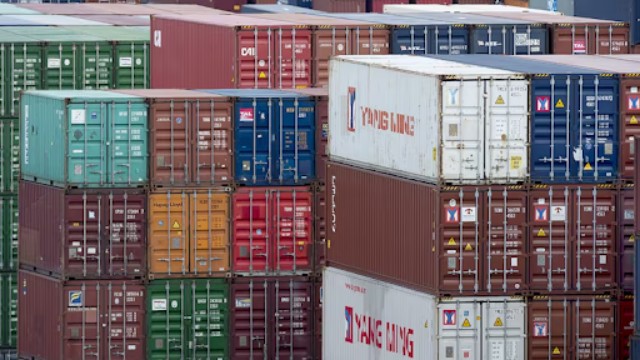
Prime Minister Justin Trudeau delivered a speech at the International Union of Operating Engineers (IUOE) conference in Winnipeg, Manitoba, on Wednesday, August 28, 2024. During his visit to Winnipeg, he attended multiple events. Photo credit: John Woods/The Canadian Press.
The Liberal government, led by Prime Minister Justin Trudeau, has reversed its decision to ease the rules around Canada's temporary foreign worker program, which was initially relaxed to help businesses address post-pandemic labour shortages. On Monday, Trudeau announced the return of stricter regulations, emphasizing that companies should prioritize hiring and training Canadian workers.
Trudeau explained that the adjustments made two years ago were necessary in the wake of the pandemic when the country faced severe labour shortages. However, the current economic situation has changed, with inflation declining and employment rates rising. According to Trudeau, Canada no longer needs as many temporary foreign workers.
The business community has generally supported increased immigration and temporary foreign workers as a solution to labour shortages, but this recent policy shift has sparked debate. Economists argue that the government should not interfere, as a tighter labour market could benefit workers by encouraging businesses to increase wages and invest in productivity.
Christopher Worswick, an economics professor at Carleton University, expressed concerns over government intervention. He suggested that businesses might be expecting to hire more workers at lower wages, which he believes is not how economies function. Public data shows that 183,820 temporary foreign worker permits were granted in 2023, marking an 88% increase compared to 2019.
Worswick has advocated for the elimination of the temporary foreign worker program, particularly the low-wage stream, proposing that the high-wage stream be integrated with the broader economic immigration system. He is not alone in this stance—prominent economist Mike Moffatt echoed his call to phase out the non-agricultural low-wage stream of the program.
However, not everyone agrees with this approach. Diana Palmerin-Velasco, senior director at the Canadian Chamber of Commerce, cautioned against dismissing the need for low-skilled workers, especially in small communities where demographics are making it difficult to find employees. Palmerin-Velasco also challenged the idea that businesses suppress wages, arguing that significant wage increases would ultimately result in higher costs for consumers, which could hurt the economy.
Worswick supports skilled immigration but stresses that Canada should not rely on it to address labour shortages. He believes that predicting labour shortages is difficult, and the focus should instead be on bringing in talented individuals with valuable skills. Worswick suggests businesses should raise their wages if they struggle to fill positions or, as Trudeau advised, invest in training their workforce.
The pandemic response to labour shortages was widely embraced, with business associations and politicians calling for more immigration to meet the demands of the job market. In 2022, the federal government relaxed rules for the temporary foreign worker program, and Immigration Minister Sean Fraser announced an ambitious target of 500,000 permanent residents annually by 2025. This move was applauded by many, including Ontario Premier Doug Ford, who emphasized the need for more workers to fill vacancies.
Despite previously supporting an increase in temporary foreign workers, Trudeau has also criticized such policies in the past. In 2014, he argued against large numbers of guest workers without the prospect of citizenship, warning that it could depress wages and threaten Canada's values of diversity.
Whether this latest shift in policy marks a change in the Liberal government's approach to labour shortages remains to be seen. Worswick believes the growing housing crisis has influenced the decision but acknowledges that discussions about labour shortages are unlikely to disappear. He also points out that the capacity to absorb new immigrants is now a significant concern for the government.















